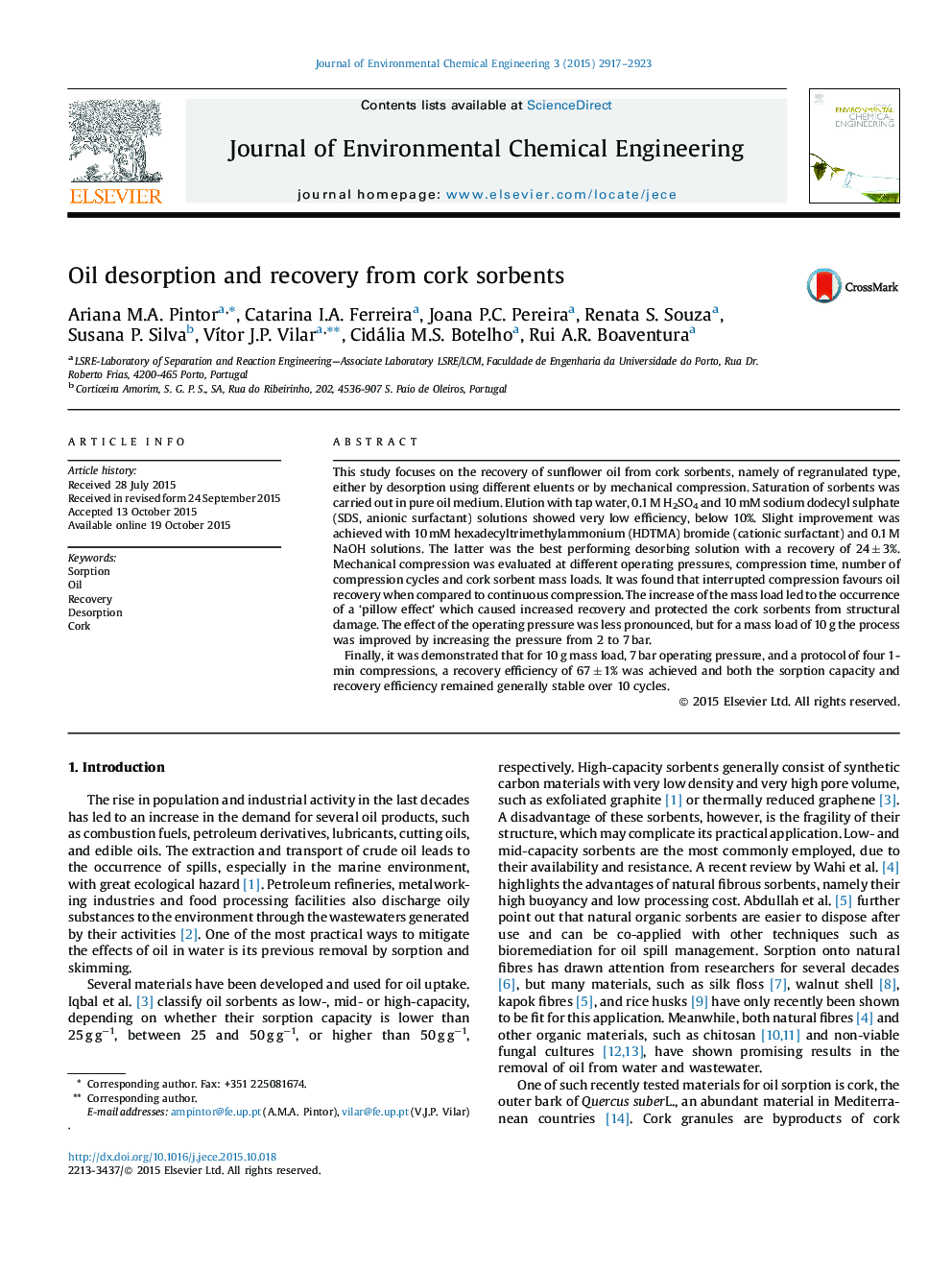| Article ID | Journal | Published Year | Pages | File Type |
|---|---|---|---|---|
| 222099 | Journal of Environmental Chemical Engineering | 2015 | 7 Pages |
•Oil desorption and recovery from oil-impregnated cork sorbents.•Mechanical compression of oil saturated cork granules achieved 67% oil recovery.•Cork granules can be reused in ten consecutive sorption/desorption cycles.
This study focuses on the recovery of sunflower oil from cork sorbents, namely of regranulated type, either by desorption using different eluents or by mechanical compression. Saturation of sorbents was carried out in pure oil medium. Elution with tap water, 0.1 M H2SO4 and 10 mM sodium dodecyl sulphate (SDS, anionic surfactant) solutions showed very low efficiency, below 10%. Slight improvement was achieved with 10 mM hexadecyltrimethylammonium (HDTMA) bromide (cationic surfactant) and 0.1 M NaOH solutions. The latter was the best performing desorbing solution with a recovery of 24 ± 3%. Mechanical compression was evaluated at different operating pressures, compression time, number of compression cycles and cork sorbent mass loads. It was found that interrupted compression favours oil recovery when compared to continuous compression. The increase of the mass load led to the occurrence of a ‘pillow effect’ which caused increased recovery and protected the cork sorbents from structural damage. The effect of the operating pressure was less pronounced, but for a mass load of 10 g the process was improved by increasing the pressure from 2 to 7 bar.Finally, it was demonstrated that for 10 g mass load, 7 bar operating pressure, and a protocol of four 1-min compressions, a recovery efficiency of 67 ± 1% was achieved and both the sorption capacity and recovery efficiency remained generally stable over 10 cycles.
Graphical abstractFigure optionsDownload full-size imageDownload as PowerPoint slide
